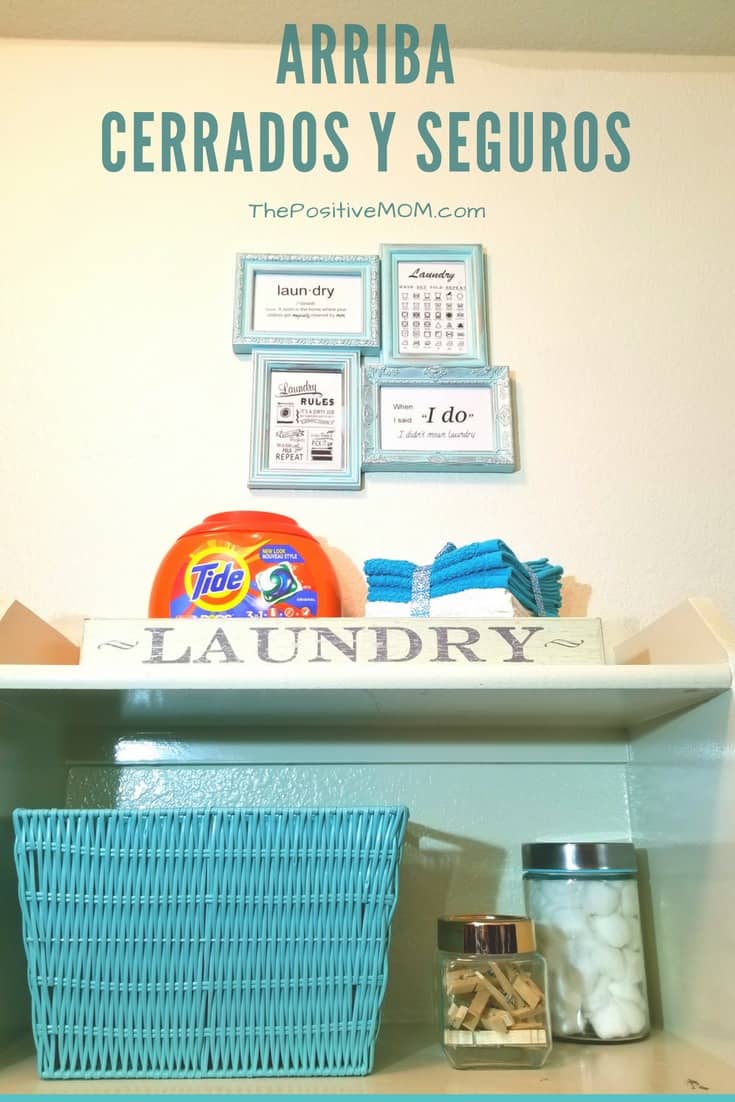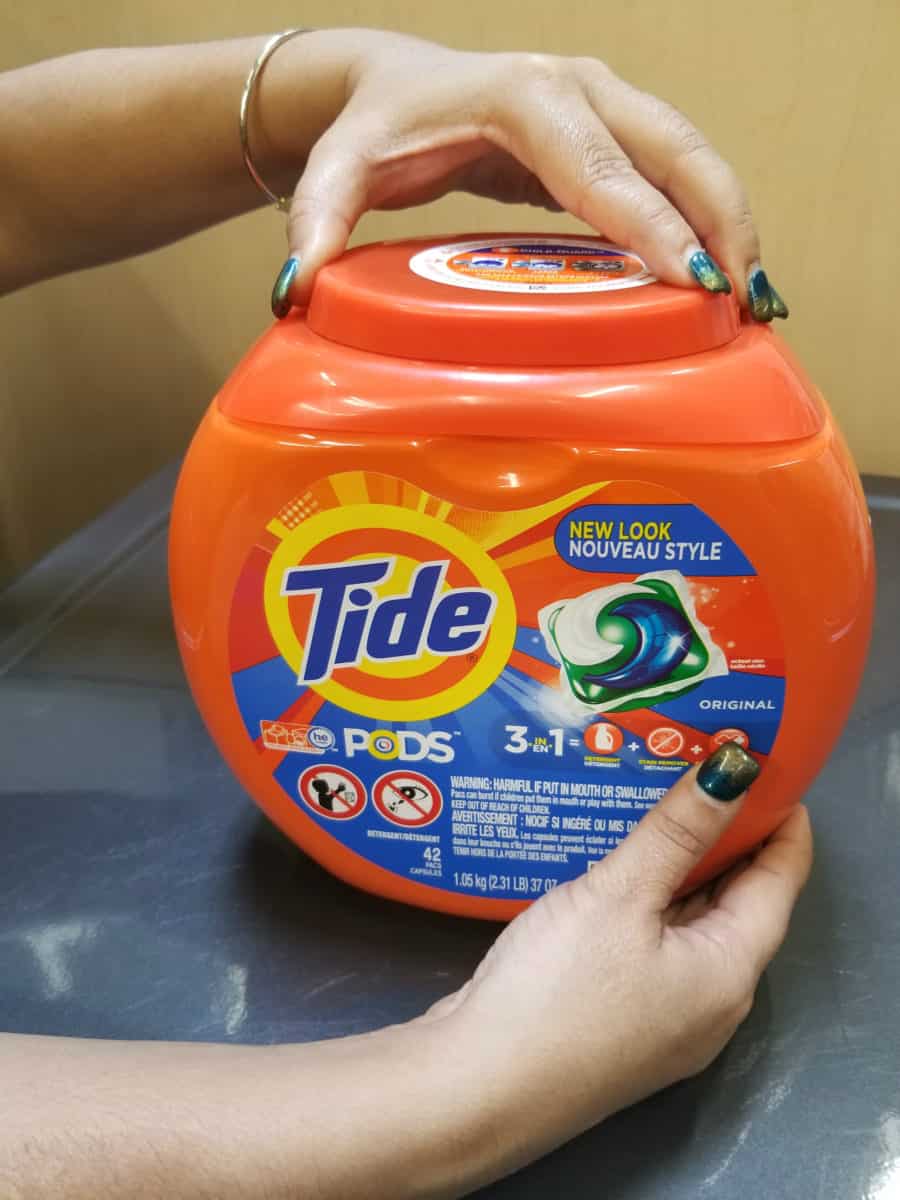
Protecting my children is a true priority of mine and I believe it’s one of the main responsibilities of being a parent.
Maybe because I had a very sad and traumatic childhood, I am always seeking ways to bring magic and wonder into my kids’ lives. I want them to experience the beauty and innocence of childhood without being scared, but I also know a lot of scary things can happen to any child and I want them to be safe!
In my opinion, there are three keys to safety: prevention, supervision, and education. These three safety elements are equally important to me and they evolve as children grow and explore.
It only takes a second for an everyday household item to become a danger and to prevent unfortunate accidents and injuries, we must child-proof our homes. Children are naturally curious so we must remember that child-proofing goes beyond putting away sharp objects, installing safety gates, guards, and locks, or using safety covers on all unused electrical outlets.
Creating a safe home environment also involves regulating water access and water temperatures, having an approved smoke alarm operating in each level of the house, removing choking hazards or anything that could strangle or suffocate a child (like soft toys and bedding, blinds, cords, and ropes, and bags, boxes and packaging), keeping all dangerous objects (like guns, knives, hand tools, power tools, razor blades, scissors, and ammunition) and all potential poisons (like detergents, polishes, pesticides, care-care fluids, lighter fluid and lamp oils) stored in locked cabinets and out of the reach of children.
You might find poisons in several places around your home, such as under the sink, in the garage, in the basement, in the medicine cabinet, or in the laundry room.
Some household cleaning products can make our lives as moms a lot easier, like laundry packets, but are extremely dangerous in little hands and mouths, so make sure you follow this simple rule: Keep Them Up, Keep Them Closed and Keep Them Safe.

After taking all the necessary safety precautions, it’s imperative to have open conversations about safety, which extends beyond home. When we take our toddler to a playdate, a playground, or a preschool where we may not be directly behind or all-eyes on our child all the time, they must know what is safe and what isn’t to keep them away from dangerous substances, sites, and situations.
Having teenagers and toddler girls means that I am concerned about different safety issues with my children. Keeping my home and my children safe requires different types of safety talks and parental controls. I’m talking to Eliana about water safety as she takes swimming lessons, to Elyssa about online safety as her interests expand, and to Elisha about driving safety and dating safety as her 16th birthday approaches. Keeping my daughters safe also means learning to balance my desire for their safety and their desire to be creative, to explore the world, and to have wholesome fun – you know, the magic!
One of the hardest aspects of the safety conversation is teaching our kids what to do when something scary happens because we don’t even want to imagine that and it’s easier to think it will never happen to us – to them! Here’s where the “What ifs” are important.
- What if I feel I’m not safe?
- What if there’s a fire?
- What if there’s a natural disaster (earthquake, hurricane, tornado, flood, etc.)?
Preparedness helps you feel less scared and helps you cope more effectively and the “What ifs” invite critical thinking and encourage open communication as you listen with patience and respect.
Some answers to these “What ifs” are the same for everyone. For example, you’ll need to have at hand the number to poison control center (1800-222 -1222), and your pediatrician’s information in case your child manages to get into anything they shouldn’t.
However, answers to questions like “Where do we meet in an emergency situation?,” can be discussed in a family council where everyone comes to a consensus. If you have an infant, a toddler, or a very young child, your babysitter or preschool staff need to be briefed on these issues so they can provide protection and direction, as needed.
The secret to teaching your children to be safe without scaring them is to make sure that you are calm, focusing on why you want them to be safe, rather than on scary stories that can make everyone anxious and fearful. Instead of talking about avoiding danger and naming these dangers, we can talk about the empowering benefits of being safe, the skills and behaviors they can practice to stay safe, and why we want them to be safe, in the first place. This is how you can raise awareness rather than raising anxiety.
One thing I love about children is that they thrive when they’re provided with specific, clear, age and maturity-appropriate rules to follow. Children of all ages want you to set boundaries about places they may go, people they may see, and things they may do, and it doesn’t need to feel like a safety lecture. In fact, in my home, I turn these conversations into very fun experiences.
I teach through entertainment. Kids can learn lessons about safety through fun by coloring, reading, or watching age-appropriate shows. These aren’t substitutes for your attention and guidance but can help you bring up topics naturally and in a panic-free environment.
I play pretend and make-believe. Rehearsing safety skills helps those skills become second nature to a child. Children learn best by actively practicing and participating and acting things out. I’ve had so much fun playing games with my kids that demonstrate what to do in case of emergencies that I forget it’s an object lesson!
I take them on a field trip. I took my girls to the fire station field trip where they got to ride the fire engine, hear fire safety tips from a real firefighter, and wear a firefighter hat! They were so engaged and the experience was sure more memorable than mom fearfully beating this safety information over their heads.
These learning opportunities will help children be alert without being paranoid. Terrified children will not make wise decisions or tell anyone about an unsafe situation they experienced, but children with a safety plan have increased confidence, competence, and willingness to communicate.
Mom is the best person to teach a child about home safety, personal safety, and a safe environment because safety is always on your mind. Knowing your unique safety style helps you figure out the best way to keep your kids safe—and safe to explore—anytime.

I am proud to collaborate with Tide because they have partnered with Dr. Shefali, a well-known child psychologist, to create the Safety Style Quiz to find out which style you most identify with and receive very useful child safety tips. This simple, six-step quiz, available at the Tide Website, helps you find out whether you are most like an elephant, eagle, cheetah, or butterfly, in your safety style as a mom.
I myself identify as a CHEETAH because I don’t subscribe to a single philosophy, I’m adaptable to what’s right for the situation and the environment, whether that’s careful or carefree!
Regardless of our individual parenting style, the one common thread among parents is feeling protective about our children and wanting to keep them safe at all times. And while there are some things that are out of our control, one space where we can make a difference is our homes, so I invite you to take the quiz today and let us know what your safety parenting style is!
How do you have the safety talk without terrifying your child? I’m grateful to help Tide bring useful tips for families on how to keep their homes safe—both in and out of the laundry room to ensure that our kids enjoy the magic freedom that comes from being active, healthy, and safe at home!
Founder of the Positive MOM® and creator of the S.T.O.R.Y. System: a blueprint to craft and share powerful stories that will transform your results and help others do the same. Dr. Elayna Fernández is a single mom of 4, an award-winning Storyteller, Story Strategist, and Student of Pain. She’s a bestselling author, internationally acclaimed keynote speaker, and 5x TEDx speaker. She has spoken at the United Nations, received the President’s Volunteer Lifetime Achievement Award, and was selected as one of the Top Impactful Leaders and a Woman of Influence by SUCCESS Magazine. Connect with Elayna at thepositivemom.com/ef and follow @thepositivemom. To receive a gift from Elayna, click HERE.

Want to support the Positive MOM blog?
The mission of the Positive MOM blog is to help moms break trauma cycles, find peace, and feel emotionally whole, so they can practice supportive parenting and create a positive and healthy environment for their children. If you found Elayna’s content valuable, please consider donating a love offering to enable her to keep creating content and helping more moms worldwide. Donate HERE.

Aine Mulloy
Monday 25th of June 2018
Don't have kids, but would agree with having talks about safety like the idea of them being about the practicalities rather than scaring them
eliza
Saturday 23rd of June 2018
Great tips! These are a fun way of making the home child safe and making our children aware and know what to do in case of emergency.
momi berlin
Saturday 23rd of June 2018
This teaches me to be mindful of the cleaning materials and anything inside the house. We have a toddler and a baby so I must keep all items in their proper places. Best if not within their reach.
Ave
Friday 22nd of June 2018
This was a fun quiz! I'm a cheetah too! I think it's super important to talk about safety but without scaring the kids. My husband still has to work on his not scaring skills :D
Karla
Friday 22nd of June 2018
Great tips! Totally agree with you! Having a safety talk with your kids is very important, we always want to ensure our child's safety!